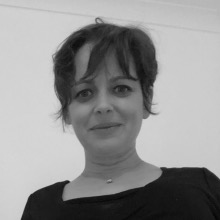
Laetitia de Almeida
Center of Linguistics
University of Lisbon
lalmeida@letras.ulisboa.pt
website

|
Laetitia de Almeida Center of Linguistics University of Lisbon lalmeida@letras.ulisboa.pt website |
| Participants: | 49 |
| Type of Study: | cross-sectional |
| Location: | France |
| Media type: | audio |
| DOI: | doi:10.21415/S6YZ-K540 |
Almeida, L. & Coupé, C. (2025). The performance of L2 French children on the LITMUS-QU Nonword repetition task during their first year of exposure: impact of age, vocabulary size, verbal-short term memory and phonological awareness. Bilingualism: Language and Cognition. Published online 2025:1-15. doi:10.1017/S136672892400083X
In accordance with TalkBank rules, any use of data from this corpus must be accompanied by at least one of the above references.
Several studies have used the LITMUS-QU-NWR task to test monolingual and bilingual children, with and without Developmental Language Disorder. This corpus focusses specifically on L2 children learning French in an immigration setting. All the children had newly arrived to France and had no prior contact to the French language. In France, all children are automatically registered at public schools at their arrival in the country. They attend normal schooling but are enrolled in a special program during their first year in primary school called Unité Pédagogique pour l’Enseignement des Allophones Arrivants (pedagogical unit for the teaching of newly arrived allophones), that they attend several hours per week. We recruited the children of the present study through the teachers of this specific unit in the city of Lyon.
This corpus consists of the elicited productions of 49* children early L2 learners of French. They have between 1 and 11 months of exposure to French and are aged between 6;0 and 9;1. They have 18 different L1 backgrounds: some of them where monolingual prior to their arrival to France, speaking either Arabic (n = 9), European Portuguese (n = 7), Albanian (n = 6), Italian (n = 5), Romanian (n = 5), Brazilian Portuguese (n = 4), Armenian (n = 3), Japanese (n = 2), Mandarin (n = 1), Kabyle (n = 1), Spanish (n = 1) or Russian (n = 1), while some were already bilingual in Italian and Arabic (n = 12), Spanish and Arabic (n = 1), Russian and Ukrainian (n = 1), Russian and Armenian (n = 1), Armenian and German (n = 1) or yet Russian and Chechen (n = 1). Detailed information for each child, including gender, age and L1 can be found in the reference above.
The recordings took place in a quiet room of the different schools who agreed to help us recruit children. Children were assessed with a battery of tasks that lasted 30 minutes and included receptive vocabulary, verbal short-term memory and phonological awareness tasks, besides the nonword repetition task. The LITMUS-QU-NWR-FR elicits the repetition of 71 nonwords that vary between one and three syllables in length to minimize the effect of working memory on the production of nonwords (see dos Santos & Ferré, 2018 for detailed explanations about the creation of this tool). Two additional nonwords were elicited at the beginning of the task for training. The task was presented to the child in the form of a PowerPoint presentation with pre-recorded oral stimuli. Children were told that an alien would teach them their own language and that they should repeat exactly what they heard. The corpus includes the target and the actual phonetic transcriptions for each nonword as well as a score (1 or 0) for nonword target production. Details about the attribution of this score can also be found in the reference above.
*62 children were included in the study but 13 parents did not authorize sharing of the data in PhonBank.
Armon-Lotem, S, de Jong, J., & Meir, N. (Eds.) (2015). Assessing multilingual children: Disentangling bilingualism from language impairment. Bristol, UK: Multilingual Matters.
Santos, C. dos, & Ferré, S. (2018). A nonword repetition task to assess bilingual children’s phonology. Language Acquisition, 25(1), 58–71. https://doi.org/10.1080/10489223.2016.1243692